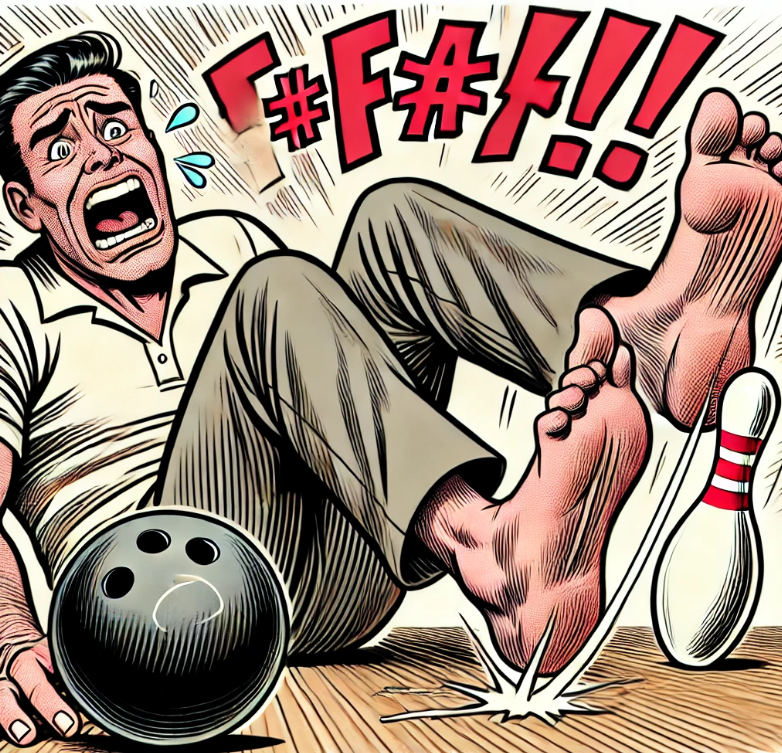
How Swearing Can Help Ease F-ing Pain
We’ve all been there. You stub your toe, hit your funny bone, or get a paper cut, and a colorful expletive flies out of your mouth. While it might seem like just a reflex, there’s actually science behind this instinctive reaction. Swearing, it turns out, can help alleviate pain. But how exactly does it work, and can it really be used as a form of pain management? Let’s dive into the fascinating world of pain and profanity.
A Surprising Discovery
The journey into understanding swearing and pain relief began in 2009 when Dr. Richard Stephens conducted a simple yet groundbreaking experiment. Participants were asked to submerge their hands in ice-cold water and hold them there for as long as possible. During the process, one group of participants repeated a swear word of their choice while another group repeated a neutral word. The results? Those who swore were able to keep their hands in the icy water longer and reported feeling less pain than those who didn’t.
This finding sparked curiosity and led to numerous studies exploring the “hypoalgesic” (pain-reducing) effects of swearing. Scientists began to investigate the mechanisms behind this phenomenon and whether it could be optimized for real-world use.
How Does Swearing Reduce Pain?
The exact mechanisms by which swearing helps alleviate pain are still not fully understood, but several theories have been proposed. Here are a few of the leading ideas:
- Fight or Flight Response: Swearing can trigger the body’s fight or flight response, which increases heart rate and adrenaline levels, helping to dull the sensation of pain.
- Emotional Release: Swearing is often tied to strong emotions. By vocalizing a swear word, we might be releasing some of the pent-up tension and stress associated with pain, thereby lessening its impact.
- Distraction: The act of swearing might serve as a distraction from the pain, drawing our focus away from the sensation and reducing its intensity.
- Social and Psychological Factors: Swearing can make us feel more confident and in control, and it might also have a social bonding effect. These factors can contribute to a reduced perception of pain.
Beyond the Lab: Real-World Applications
Most studies on swearing and pain have been conducted in controlled laboratory settings with healthy participants. This raises an important question: How well do these findings translate to real-world scenarios and diverse populations?
Researchers are now looking into how swearing can be applied in clinical settings or everyday life to help manage pain. For instance, could swearing be used as a tool for patients dealing with chronic pain? Could it help athletes push through the pain of intense training sessions? The potential applications are vast, but more research is needed to understand the full scope of swearing’s effectiveness and how best to implement it.
The Role of Dosage
Another intriguing aspect of this research is the concept of “swearing dosage.” Does the intensity, frequency, or volume of swearing impact its effectiveness in reducing pain? Preliminary studies suggest that the answer might be yes.
For example, saying a highly intense swear word like “f*ck” might be more effective than a milder expletive like “darn.” Similarly, shouting a swear word could potentially have a different effect than whispering it. Understanding these nuances can help tailor swearing as a therapeutic tool.
Cultural Considerations
Interestingly, the effectiveness of swearing in pain reduction appears to be consistent across different languages and cultures. Studies have shown that swearing in one’s native language tends to have a stronger effect than in a second language, likely due to the deeper emotional connection with words learned early in life.
This suggests that the pain-relieving benefits of swearing could be universally applicable, though cultural attitudes toward swearing might influence its acceptability in certain settings.
Future Research Directions
While the existing body of research provides compelling evidence for the hypoalgesic effects of swearing, many questions remain unanswered. Future studies need to address the following:
- Mechanistic Insights: Further research into the physiological and psychological mechanisms behind swearing’s pain-relieving effects.
- Real-World Efficacy: Studies exploring the practical applications of swearing in diverse populations and real-world settings.
- Optimal Dosage: Investigations into how different intensities, frequencies, and volumes of swearing impact pain modulation.
- Ethical Considerations: Understanding the potential ethical implications and cultural sensitivities related to using swearing as a pain management tool.
Engaging with the Science of Swearing
Swearing might not be the first thing that comes to mind when you think of pain relief, but the science behind it is both fascinating and promising. As research continues to uncover the complexities of how swearing affects our perception of pain, we might find new, innovative ways to manage discomfort in our everyday lives.
So, the next time you stub your toe or experience a sharp pain, don’t hold back that expletive—it might just help you feel a bit better!
What are your thoughts?
- Have you ever noticed a reduction in pain when you’ve sworn after an injury? Share your experiences and thoughts!
- Do you think swearing should be incorporated into pain management practices? Why or why not?
Transform Your Science World:
Get the latest and most inspiring scientific updates with ‘This Week in Science’! Perfect for educators and science enthusiasts, our free weekly newsletter delivers groundbreaking research and stories that ignite your passion for learning and teaching. Sign up today and transform your approach to science.



